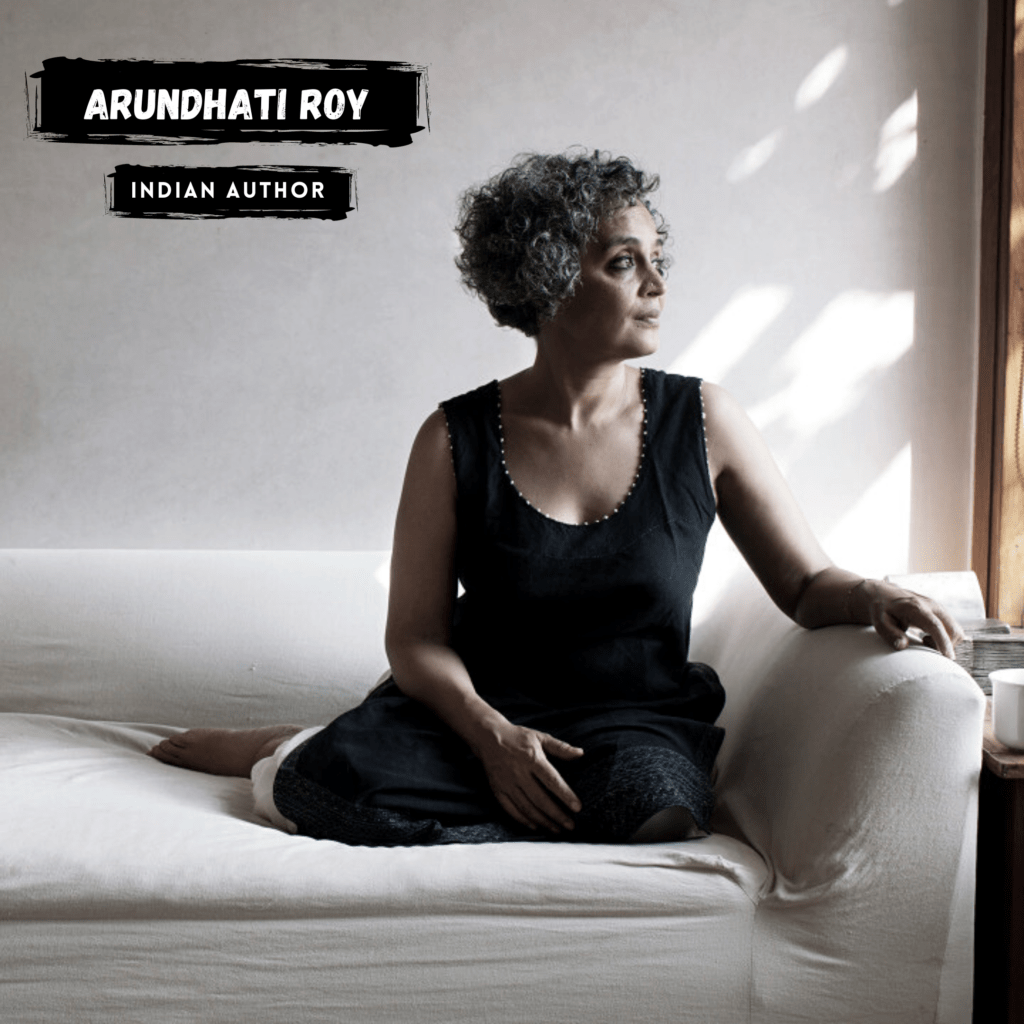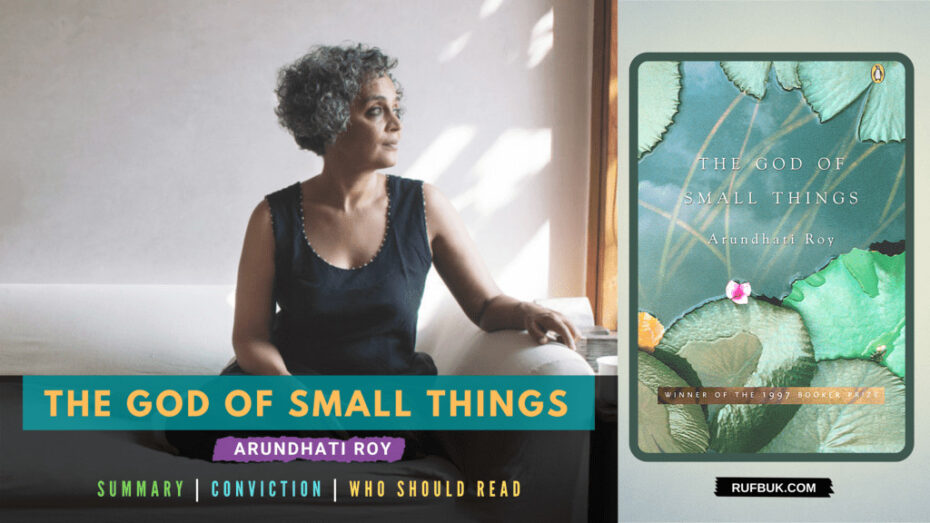Table of Contents
Book Details
| Book Name | The God Of Small Things |
| Author | Arundhati Roy |
| Genre | Fiction |
| Publishing Date | 1997 |
| Rating by Editor | 4.0/5.0 |
ESTHA and RAHEL our protagonists, as kids were very good at reading and writing, they developed the hobby of reading words backwards even at a young age. Roy’s writing style of the novel is similar to the twins’ pursuit, that even if you read the book starting from the end of The God Of Small Things, you will get the same story chronologically!
Why Should You Read This Book?
Forbidden love, loss, politics, family drama, rural village culture, complicated family relationships, everything is there and, of course, portrayed through small things, small things that gather to be significant.
The God Of Small Things got published in the year 1997; it was an instant classic. And I dare say that winning the Man Booker Prize the very same year was just a cherry on the top. However, I want to warn you that it is a slow poison, positively. This book, the story, is not going to leave you anytime soon. It is going to take up a lot of space for your thoughts for some time. All I mean is that it is going to touch you positively. If you are ready for such a challenge, then Arundhati Roy has created it out there through The God Of Small Things. You have to sip it like a wine, enjoying it slowly. And there is a lot to read between the lines. It reveals itself to the reader and brings something new every time you read it. This book talks about the freedom of an individual. Every individual to be their God, to decide for themselves irrespective of their caste and gender. To do the small things that matter well and become the God of small things.
The novel comes under psychological fiction and domestic fiction. The God Of Small Things itself is also a controversial bomb, very openly criticizing the caste system, dirty politics, domestic violence, and many such issues. Roy has penned down enormously complex and provocative subjects very beautifully. She has described it as if the reader can experience it while reading it. Relationships within a family are expressed in detail, given a deeper meaning in this book. In day-to-day life and universal complexities, sufferers are brought together to say that they are the same things. The character building is realistic and detailed that we are easily in tune with their life and story. Her characters are portrayed by the time and the area where they live. Another quality of the book is that it creates a nostalgic feeling for adults about their past childhood.
Conviction
EVERYONE should read The God Of Small Things. It is a complete package. THE GOD OF SMALL THINGS itself is totally a different genre! We all should read this book and know about the small things Roy wants to share with us, the small things that matter in our lives. Because at the end of the day, isn’t that what we all live for but for those small things. Seeing the smile on your loved ones face, being appreciated for the things you did and thought no one came to know or care about, appreciated for your looks or talent, laughing so hard that your stomach hurts, someone helping you pick up the thing that you dropped. These small things that are filled with an infinite capacity to become larger are what really matters.
About The Book
The God Of Small Things is semi-autobiographical. Arundhati Roy has penned down some of her childhood memories and life incidents. It was her debut novel, and she had started writing it in 1992, only to be published five years later. Set in Roy’s maternal hometown in Kerala, India, called Ayemenem. The story swirls around congenial twins Rahel and Estha, who are isolated for 23 years after the ominous few dozen hours in which their cousin drowns. Their mother’s forbidden affair is revealed, and her lover is murdered. At the same time, the plot is set at the point of the reunion of Rahel and Estha. The portrayal takes place mostly in the past, recreating the details around the fateful events that led to their isolation. The novel invades into the past to explore the characters’ efforts to operate in a world where they don’t even fit, alongside their nation’s administrative turmoil.
The writing style is so brilliant and very open. Wherever necessary, Roy has poured out her heart on the matter. There is no censor for criticism or sex. The God Of Small Things itself is a question. Small, unnecessary, and ordinary things are described in detail and are the basics of this book and our life. The author gave the novel a very apt title. The cover page in the original edition is also very captivating and won some hearts too. The photograph of water lily and bougainvillaea in a pond was taken by Arundhati Roy’s friend and the publisher of the book.
To answer why this is a great story, I borrow Arundhati Roy’s own words from The God Of Small Things :


Summary of The God of Small Things
The story of The God Of Small Things unfolds in the backdrop of the town Ayemenem. It is written from the perspective of little Rahel. The book begins portrayal at the funeral of the twins’ cousin Sophie after her drowning. Ammu, the mother of the twins, fed up with her life at home and desperate to be married, goes to Calcutta, hoping never to return. There she meets her husband, Baba. The twins are born in Shillong as the only glimmer in their disastrous and abusive. Following the divorce, they return to Kerala to live with Ammu’s parents, brother Chacko and aunt Baby Kochamma. Ammu struggles not to let her frustration out at her children when she feels particularly cornered in her parents’ small-town home, where neighbors judge and avoid her for being divorced.
Rahel and Estha have a close relationship with Velutha, a worker in their family’s pickle factory and a member of the so-called “untouchable” caste. Ammu embarks on an affair by night with the man, and her children love in the day. Velutha, meanwhile, balances his romance with Ammu and amity with the twins not only with his work to their family but also with his membership to a budding communist countermovement to Indira Gandhi’s “Green Revolution.“ They infringe what Roy describes as the “love laws,” forbidding intimacy between different castes. Chacko invites his divorced wife Margaret and their daughter Sophie to spend Christmas at Ayemenem. This visit ends us a disaster with the death of Sophie. Rahel and Estha are blamed for her death, and they, along with their mother Ammu and her lover Velutha are made to pay a heavy price.
A series of drama follows till the twins meet again. Anything more than this would be a huge spoiler, and I don’t want that to happen. It would help if you enjoyed yourself exploring it. Throughout the book, time shifts back and forth of their present life and flashbacks between 1969 and 1993. 1963 is their childhood life when they are seven years old, and they reunited in 1993.
My Favourites
Definitely Estha and Rahel. Estha wished they were born inside a bus so that they could’ve got free rides their entire life. Rahel wanted to be friends with the kangaroo-shaped waste bins in the airport. The way they irritate elders with their naughty innocence. The scene where they sang a song to the tree, pleading not to litter leaves anymore. Those twins. Their sister and brother relation, their childhood experiences, all these take me to a memory lane of my lost innocence. There are not many novels that beautifully describe childhood.
They both are two bodies and a single soul. When both asleep, Rahel laughs at the dream that Estha sees. They are made for each other.
Facts V/S Fiction
Even though The God Of Small Things is semi-autobiographical, the author herself admitted that she finds it challenging to say between fact and fiction after completing the novel as it has got deeply fused in her mind. Most of her family members’ lives are the same, and so are the name of the places and other addresses. Ammu is almost the same person as Mary Roy, Arundhati’s mother, except her affair with her childhood friend Velutha, is fictional. Mary Roy is also a Women’s rights activist who fought and won equal rights on Syrian Christian women’s ancestral property. Although Estha is only just one-fourth, similar to Arundhati Roy’s brother, they are not twins. Lalit Kumar Christopher Roy had a tough time after the publishing to detach himself from Estha. He admires his writer sister and says that she had this knack for story-telling and would have added a lot of “spice.”
The narrative technique Magical Realism Roy has used to bring out fiction from her own family history and experiences, which many writers use to pen down with freedom and creatively narrate their past.
About The Author


D.O.B: 24th NOVEMBER 1961
BORN IN SHILLONG, MEGHALAYA, INDIA
NATIONALITY: INDIAN
ARUNDHATI ROY is a world-famous writer, activist, and architect best known for her semi-autobiographical novel, THE GOD OF SMALL THINGS. Not many of us know her as the winner of the National Film Award for Best Screenplay in 1988 for In Which Annie Gives It Those Ones. The God Of Small Things was her debut novel. Her second novel, The Ministry Of Utmost Happiness, came out only in 2017. She is an author who truly swings her pen as a deadly weapon. She is bold and openly criticizes every failed system in our community. Her views and words are highly awaited whenever there are a significant public dilemma and other situations. She wants every citizen to wake up and fight for their life and live freely.
Roy’s rich language and masterful story-telling earned her the prestigious Booker prize for “The God of Small Things.” In the novel, she questions the culture of her native India, including its social traditions and colonial history. One of her centres is the caste system, a way of organizing people by hereditary social class thousands of years old. Roy warns that the catastrophic outcomes of their relationship “would sneak forever in ordinary things,” like “coat hangers,” “the tar on roads,” and “the absence of words.” Arundhati Roy’s inscribing makes static use of these ordinary things, bringing lush detail to even the most tragic moments. Arundhati Roy is a wonderfully talented writer and human being I admire and her following view on being a writer.
Video on Why should you read “The God of Small Things” by Arundhati Roy?
ALSO READ:-
THINK LIKE A MONK
EMOTIONAL INTELLIGENCE: WHY IT CAN MATTER MORE THAN IQ

